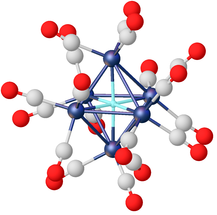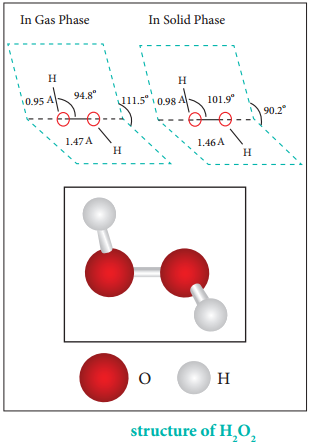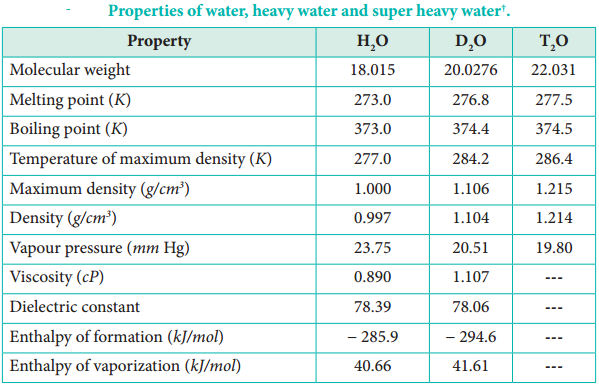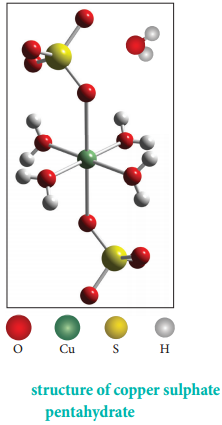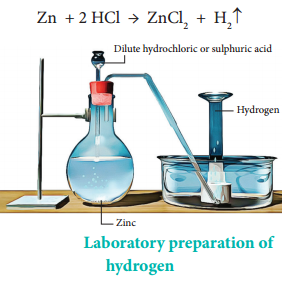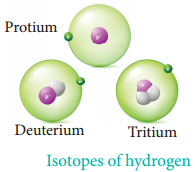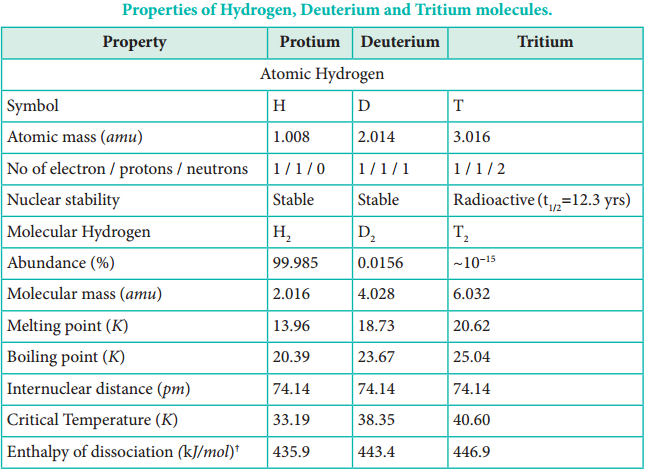NCERT Solutions for Class 10 Science are the part of NCERT Solutions for Class 10. Here we have given CBSE Class 10 Science NCERT Solutions.
All Chapters NCERT Solutions for Class 10 Science are available over here in PDF format for free of cost. Students who are searching for the best study material to get complete knowledge about the science subject can grab this chance. In this NCERT Solutions class 10 science, candidates can get all chapters important questions and answers in a detailed explanation for a better understanding of the subject.
Once you revise this whole NCERT Science Solutions Pdf, then you can answer any type of science questions confidently at the time of final exams. So, download NCERT Grade 10 Science Solutions for all chapters in PDF format & prepare thoroughly for the examinations.
Free PDF Download Class 10 Science NCERT Solutions for all Chapters
Preparing with Chapterwise NCERT Solutions for Class 10 Science is the smartest way to score maximum marks in the examinations. It can help you identify your weak areas and level of preparation. So that you can plan your preparation accordingly and give your best performance in the exams. From here, you can download NCERT Class 10 Science Solutions in PDF Format through the available direct links.
You can refer to the class 10 science NCERT Solutions offline and make use of these answers to clarify all your queries. Access the below PDF links of Chapterwise NCERT Solutions Class 10 Science & kickstart your preparation.
Chapter 1 Chemical Reactions and Equations
- NCERT Solutions for Class 10 Science Chapter 1
- HOTS Questions for Chemical Reactions and Equations
- Value Based Questions for Chemical Reactions and Equations
- Previous Year Question Papers for Chemical Reactions and Equations
- NCERT Exemplar Problems with Solutions for Chemical Reactions and Equations
More Resources
- NCERT Solutions for Class 10 Science
- NCERT Exemplar Solutions for Class 10 Science
- HOTS Questions for Class 10 Science
- Value Based Questions in Science for Class 10
- Previous Year Question Papers for CBSE Class 10 Science
Chapter 2 Acids Bases and Salts
- NCERT Solutions for Class 10 Science Chapter 2
- HOTS Questions for Acids Bases and Salts
- Value Based Questions for Acids Bases and Salts
- Previous Year Question Papers for Acids Bases and Salts
- NCERT Exemplar Problems with Solutions for Acids Bases and Salts
Chapter 3 Metals and Non-metals
- NCERT Solutions for Class 10 Science Chapter 3
- HOTS Questions for Metals and Non-metals
- Value Based Questions for Metals and Non-metals
- Previous Year Question Papers for Metals and Non-metals
- NCERT Exemplar Problems with Solutions for Metals and Non-metals
Chapter 4 Carbon and its Compounds
- NCERT Solutions for Class 10 Science Chapter 4
- HOTS Questions for Carbon and its Compounds
- Value Based Questions for Carbon and its Compounds
- Previous Year Question Papers for Carbon and its Compounds
- NCERT Exemplar Problems with Solutions for Carbon and its Compounds
Chapter 5 Periodic Classification of Elements
- NCERT Solutions for Class 10 Science Chapter 5
- HOTS Questions for Periodic Classification of Elements
- Previous Year Question Papers for Periodic Classification of Elements
- NCERT Exemplar Problems with Solutions for Periodic Classification of Elements
Practical Based Questions for Class 10 Science Chemistry
Chapter 6 Life Processes
- NCERT Solutions for Class 10 Science Chapter 6
- HOTS Questions for Life Processes
- Value Based Questions for Life Processes
- Previous Year Question Papers for Life Processes
- NCERT Exemplar Problems with Solutions for Life Processes
Chapter 7 Control and Coordination
- NCERT Solutions for Class 10 Science Chapter 7
- HOTS Questions for Control and Coordination
- Value Based Questions for Control and Coordination
- Previous Year Question Papers for Control and Coordination
- NCERT Exemplar Problems with Solutions for Control and Coordination
Chapter 8 How do Organisms Reproduce
- NCERT Solutions for Class 10 Science Chapter 8
- HOTS Questions for How do Organisms Reproduce
- Value Based Questions for How do Organisms Reproduce
- Previous Year Question Papers for How do Organisms Reproduce
- NCERT Exemplar Problems with Solutions for How do Organisms Reproduce
Chapter 9 Heredity and Evolution
- NCERT Solutions for Class 10 Science Chapter 9
- HOTS Questions for Heredity and Evolution
- Value Based Questions for Heredity and Evolution
- Previous Year Question Papers for Heredity and Evolution
- NCERT Exemplar Problems with Solutions for Heredity and Evolution
Chapter 10 Light Reflection and Refraction
- NCERT Solutions for Class 10 Science Chapter 10
- HOTS Questions for Light Reflection and Refraction
- Value Based Questions for Light Reflection and Refraction
- Previous Year Question Papers for Light Reflection and Refraction
- NCERT Exemplar Problems with Solutions for Light Reflection and Refraction
Chapter 11 Human Eye and Colourful World
- NCERT Solutions for Class 10 Science Chapter 11
- HOTS Questions for Human Eye and Colourful World
- Value Based Questions for Human Eye and Colourful World
- Previous Year Question Papers for Human Eye and Colourful World
- NCERT Exemplar Problems with Solutions for Human Eye and Colourful World
Chapter 12 Electricity
- NCERT Solutions for Class 10 Science Chapter 12
- HOTS Questions for Electricity
- Value Based Questions for Electricity
- Previous Year Question Papers for Electricity
- NCERT Exemplar Problems with Solutions for Electricity
Chapter 13 Magnetic Effects of Electric Current
- NCERT Solutions for Class 10 Science Chapter 13
- HOTS Questions for Magnetic Effects of Electric Current
- Value Based Questions for Magnetic Effects of Electric Current
- Previous Year Question Papers for Magnetic Effects of Electric Current
- NCERT Exemplar Problems with Solutions for Magnetic Effects of Electric Current
Chapter 14 Sources of Energy
- NCERT Solutions for Class 10 Science Chapter 14
- HOTS Questions for Sources of Energy
- Value Based Questions for Sources of Energy
- Previous Year Question Papers for Sources of Energy
- NCERT Exemplar Problems with Solutions for Sources of Energy
Chapter 15 Our Environment
- NCERT Solutions for Class 10 Science Chapter 15
- HOTS Questions for Our Environment
- Value Based Questions for Our Environment
- Previous Year Question Papers for Our Environment
- NCERT Exemplar Problems with Solutions for Our Environment
Chapter 16 Management of Natural Resources
- NCERT Solutions for Class 10 Science Chapter 16
- HOTS Questions for Management of Natural Resources
- Value Based Questions for Management of Natural Resources
- Previous Year Question Papers for Management of Natural Resources
- NCERT Exemplar Problems with Solutions for Management of Natural Resource
Class 10 Science NCERT Solutions
NCERT Solutions Class 10 Science was indeed a testimony of its popularity among the readers both students and teachers. With all humility, we express our gratitude to the readers throughout the country. We feel immense pleasure in presenting the Science NCERT Solutions Class 10.

NCERT Class 10 Science Solutions Chapter End Assignments have the following special features:
- NCERT InText Problems and End Exercises are fully solved.
- Very Short Answer, Short Answer and Long Answer questions have been updated.
- HOTS and Value Based Questions have been framed to cater to brilliant and outstanding students.
- Questions from Latest CBSE Examination Papers have been solved.
- Complete solutions to NCERT Exemplar Problems are provided in each chapter. Practical Based Questions (PBQs).
Class 10 Science NCERT Solutions was strictly based on NCERT Text book and follows the latest Remodeled Assessment Structure effective from the Academic Year 2018-19 issued by CBSE. It has been revised exhaustively in the light of questions asked in the latest Board Examinations and valuable suggestions received from learned colleagues from time to time.
Why Should I Read NCERT Solutions for Class 10 Science?
The reasons behind the Class 10 Science NCERT Solutions PDF best study material are mentioned here:
- Learninsta.com provided NCERT Solutions for Class 10 Science are prepared by subject experts in a simple language.
- It gives an extra edge to your preparation and also improves your subject knowledge.
- 10th standard Science NCERT Solutions cover all important and unsolved questions for all chapters and the best for quick revision.
- It offers a detailed explanation & step by step procedure for all concept questions to make it easy for a better understanding.
- You can hold a good grip on the subject by accessing & preparing from these chapterwise Detailed NCERT Solutions PDF for class 10 science.
FAQs on Class 10 Science NCERT Solutions PDF
1. How can I get Chapterwise NCERT Solutions for Class 10 Science?
Visit our page and get Chapterwise NCERT Solutions for Class 10 Science in detail.
2. On which website I can find the best NCERT Solutions class 10 science?
Learninsta.com is a reliable and trusted website that provides the best NCERT Solutions for Class 10 Science. These solutions help students of class 10 to ace up their preparation.
3. Can I download Chapterwise NCERT Solutions for Class 10 Science?
Of course, you can download NCERT Solutions for Class 10 Science for All Chapters by just tapping on the respective chapter link. Later, you will see the download option click on it, and use the pdf material for further reference during preparation & revision.
Summary
We believe the data provided in this article has been beneficial for all 10th class students to clarify their doubts about the Science subject. Require anything else along with NCERT Solutions for Class 10 Science, drop a comment below and we’ll come back to you soon. Keep in touch with our site Learninsta.com and get the latest updates on NCERT Solutions in less time.



